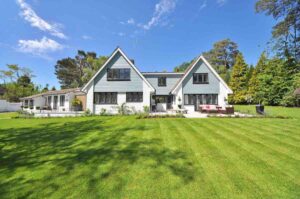If you’re looking for a comprehensive long-term financial roadmap, Financial Planner Nashville is the right professional to turn to. Their responsibilities include building an emergency fund, creating a budget and offering targeted advice.

Some financial planning specialists also act as emotional therapists to help protect clients from bad decision-making that could impact their finances. Make sure to ask about this when hiring a specialist.
Financial goals are vital to a secure future, but they can be difficult to define. Taking an objective approach to this process helps individuals understand what they hope to achieve financially, how long it will take them to reach those goals and the strategies needed to make their vision a reality. Individuals should also prioritize their financial goals by identifying those that are urgent and which should take precedence over others.
Defining financial goals can be broken down into three categories: short-term, mid-term and long-term. Short-term objectives are those that can be achieved within a year, such as saving for a vacation or purchasing a new laptop. Mid-term financial goals may be more complex and could take up to five years to achieve, such as funding a semester or year abroad or paying off credit card debts. Long-term financial goals require a significant amount of time to accomplish and often involve substantial investments, such as a home purchase or retirement savings.
Once individuals have clearly identified their financial goals, they should establish a framework to support them. This will help individuals stay accountable to their goals and make adjustments as necessary, such as a change in income or life circumstances. In addition, creating a budget helps individuals get a firm grasp on their current finances and allocate resources accordingly.
To ensure financial goals are realistic and timely, they should be SMART. This acronym stands for Specific, Measurable, Achievable, Relevant and Timely. Individuals should also consider their motivations for reaching each goal and how they will benefit from their accomplishment. This step is important because it can motivate individuals to stick with their plan even when times get tough.
As they work to establish their framework, individuals should also prioritize building an emergency fund and paying off high-interest debt as a starting point. Having these safety nets in place will give individuals peace of mind and help them pursue more ambitious financial goals with confidence.
This step is also a good opportunity to consult with a financial planner to explore investment options that can help individuals grow their money over time and reach their goals more quickly.
Creating a Budget
A budget is a financial plan that helps you track and control your spending. It also helps you set and reach important financial goals, like paying off debt, building an emergency fund, or saving for retirement. There are many different methods for creating a budget, and it is important to find one that works for your lifestyle. It is also important to monitor your budget regularly and make adjustments based on your actual expenses and savings goals.
To begin creating your budget, gather all of your monthly income sources. This includes your paychecks, Social Security and other government benefits, interest from investments, tax refunds and rebates, and any money you receive from family or friends. Once you have your total income, write it all down on a simple spreadsheet or money management app.
Once you have a complete picture of your monthly spending, you can start to identify areas where you could cut back. Start by prioritizing your essential costs, such as housing, utilities, food and transportation. Once you have your essentials covered, allocate funds to other categories that are important to you (e.g., entertainment, shopping). Ultimately, you should aim to have as much cash left over as possible, which can be used for savings or paying off debt.
Lastly, if you are finding it difficult to stick with your budget, consider enlisting the help of a financial professional. A reputable financial coach, accredited credit counselor or adviser from your bank may be able to provide valuable assistance and tips for managing your money wisely.
When you are establishing your budget, it is important to take a look at all of the costs you have in your life and determine what can be cut out to free up more money for your savings goals. Remember that budgeting is a process, and it takes time to build a healthy spending habit. Be patient and make small changes that will add up over time. Eventually, you will be able to save more money for the things that matter most in your life.
Building an Emergency Fund
Having an emergency fund is essential for your financial health. Unexpected expenses or life events can quickly derail even the best-laid plans if you’re not prepared. In fact, research from the Consumer Financial Protection Bureau (CFPB) shows that sudden expenses are one of the leading reasons people struggle to pay their bills.
Ideally, you should have enough money in your emergency fund to cover at least three to six months of living expenses. This will give you a cushion to avoid incurring debt or turning to high-interest lending services, which can make a difficult situation even worse.
To determine how much you should save, start by assessing your monthly expenses, including mortgage or rent, utilities, cell phone bill, car payment, grocery costs and other regular expenses. Add up these costs and any additional payments you make on a less frequent basis, such as insurance, to get an idea of your average monthly spending.
Once you know how much you should save, set goals and create an action plan to reach them. You may need to make changes in your budget or lifestyle to increase your savings, such as cutting back on entertainment expenses or reducing dining out. Another option is to save a portion of any windfalls, such as tax refunds or work bonuses, into your emergency fund rather than spending it.
It’s also a good idea to set up recurring automatic transfers from your checking account into your emergency fund so you’re consistently adding to the balance. This can be done through your bank’s website or mobile app, and can help ensure that you stick with your savings goals, regardless of whether you’re having a great month or not.
Finally, it’s important to remember that the purpose of an emergency fund is to help you deal with unexpected expenses or events, not to treat yourself to a vacation or new TV. Unless it’s an absolute necessity, you should only spend money from this account for things like medical bills or repairs to your home or car. If you find yourself dipping into your emergency fund for non-emergency purchases, it’s time to revisit your savings plan.
Investing
Financial planners help people create and implement comprehensive financial plans that meet their short- and long-term goals. This could include setting up a budget, creating an emergency fund and saving for retirement or educational expenses. A financial planner may also advise on investment strategies and products to help their clients grow their wealth over time. Unlike a broker or investment advisor, who often sells specific financial products and may not have a financial planning focus, a financial planner is held to a fiduciary standard by the CFP Board of Standards. This means they must act in their client’s best interest, which sets them apart from other professionals who don’t have the same responsibility.
As a financial planner, you will need to be familiar with a wide range of topics, including estate planning, tax laws, saving for retirement and investment options. You will need to be able to assess your client’s current financial situation and recommend appropriate steps for future growth, while remaining within their risk tolerance. It’s essential to keep up with market trends, investment news and changes in the regulatory environment to ensure you can provide your clients with the most up-to-date information.
Some professional financial planners have additional qualifications beyond their bachelor’s degree, such as the CERTIFIED FINANCIAL PLANNERTM (CFP) designation. This is a professional certification that demonstrates your commitment to the industry, as well as your knowledge of comprehensive financial planning processes and strategies. While not a legal requirement, it’s becoming increasingly common for planners to have this qualification.
A financial planner will likely be able to advise on a range of financial products, such as an ISA or pension, but they will take a more holistic approach to finances and look at the bigger picture. A planner will use their expertise in taxation, budgeting and investment options to create an overarching strategy that will help you achieve your financial goals.
Financial planners can help you set up a budget and create an emergency fund, but they will not necessarily manage your investments or invest your money for you. This is where an investment adviser comes in. These professionals are registered with the Securities and Exchange Commission (SEC) and have a license to buy and sell securities, such as bonds, stocks and mutual funds. They can help you build an investment portfolio, advise on tax laws and suggest suitable investment options based on your risk tolerance and goals. Investors can pay these professionals by the hour, at a flat rate or by a percentage of their assets under management.



